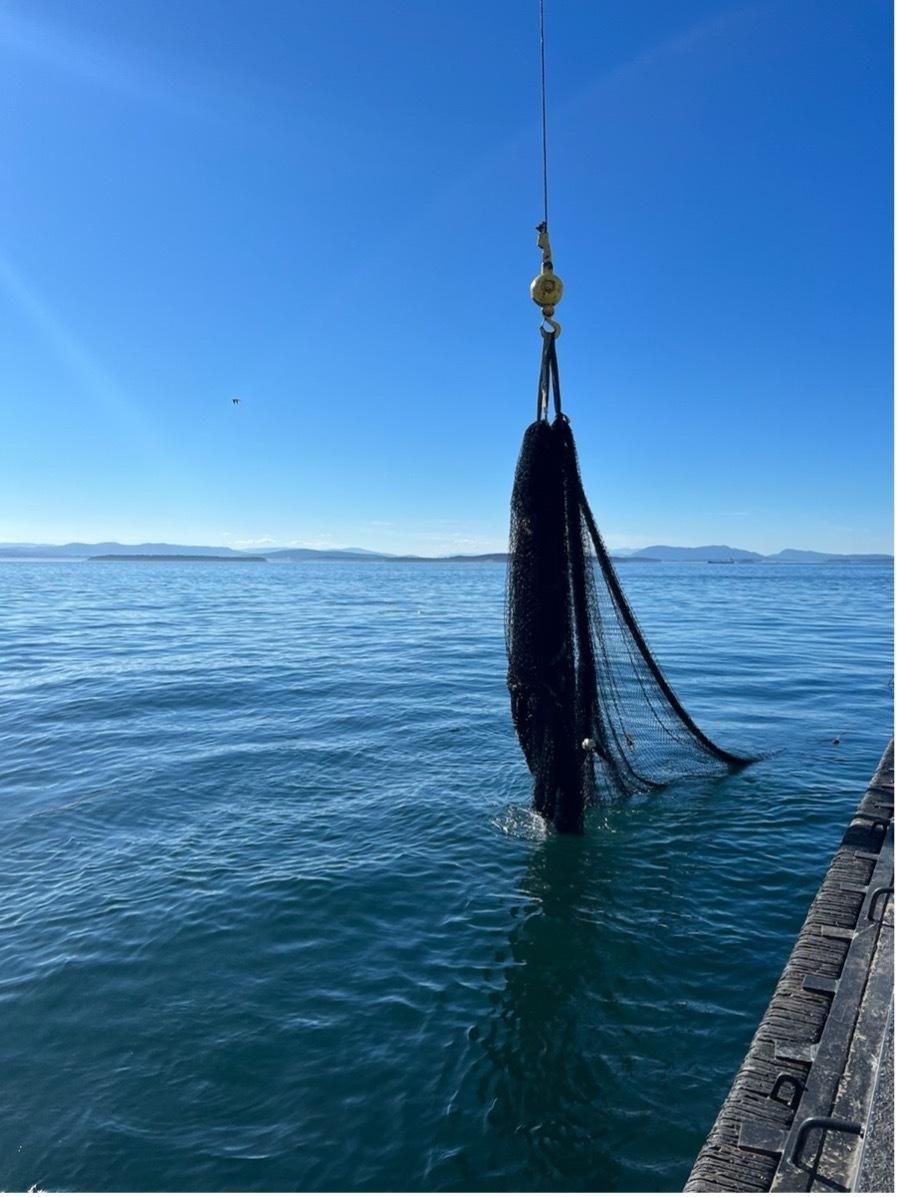UPDATE 3: Unified Command continues response to pollution incident off San Juan Island
U.S. Coast Guard sent this bulletin at 08/17/2022 12:29 AM EDT
| News Release |
U.S. Coast Guard 13th District Pacific Northwest |
UPDATE 3: Unified Command continues response to pollution incident off San Juan Island
 |
Editors' Note: Click on images to download high resolution version
SEATTLE — The Unified Command is continuing its coordinated response Tuesday following the sinking of a commercial fishing vessel creating a pollution incident west of San Juan Island, Washington, on Saturday, Aug. 13.
On scene observations this morning noted a significant reduction in the visible sheen, which was confirmed by subsequent drone and helicopter overflights as well as by surface and shore assessments. By mid-afternoon the sheen appeared to have completely dissipated. Diesel is significantly lighter than water and naturally disperses in the water column or evaporates quickly after a discharge.
Federal first responders from the Coast Guard along with State and local experts from the Department of Ecology and San Juan County patrolled the beaches in the vicinity of the spill and could not identify any spots of sheening on the shore.
“I am proud of the interagency partnership and collaboration at all levels to respond to this pollution threat and minimize environmental impacts,” said Cmdr. Jon Ladyga, Federal on Scene Coordinator. “While optimistic about the on-water and shoreline assessments, we recognize that critical work remains”
As of Tuesday afternoon, more than 3,800-feet of absorbent boom had been placed throughout the affected area, in areas as far south as Kanaka Bay to areas as far north as the tip of Henry Island. The booming is remaining in place as a precautionary measure.
Along with the containment and recovery response for the preservation of ecologically sensitive areas, the protection of marine mammals such as the Southern Resident Killer Whale (SRKW) population continues to be a priority. Today local volunteers from a variety of SRKW advocacy groups, including the Whale Museum and Sound watch, worked under the supervision of NOAA to practice whale deterrent measures at sea. While marine mammals have not been sighted in the immediate vicinity of the spill, teams remain poised to respond.
Unified Command crew continue to work alongside partner agencies, including the Canadian Regional Operations Center, to track SRKWs utilizing hydrophone and sonogram technology.
The Department of Ecology continues the community air monitoring program, noting that no monitors have shown any levels above background (normal) levels.
Coast Guard Cutter Henry Blake, a 175-foot Coastal Buoy Tender, was diverted to the area today to recover a seine net that floated free of the wreck. Free floating nets pose significant ecological hazards; removal was a top priority for the Unified Command. The crew of the cutter was able to use its shipboard equipment to remove most of the netting. A second net was observed submerged at approximately 100-feet of depth by divers yesterday and dive teams were able to remove several panels of the netting today.
The wreck, which was initially thought to lie at 100-feet of depth, was discovered yesterday to be at approximately 200-feet below the surface. This poses additional hazards for divers while they work as they must use specialized gas mixtures and use a decompression chamber upon returning to the surface. The increased depth also limits the amount of time divers can stay on scene with the vessel. These factors combined with the significant currents in the area have necessitated diving operations to be limited to periods in and near slack water.
To ensure a safe work environment for divers, safety zones extending 1,000-yards around all responding dive boats remain in effect. The Coast Guard continues to manage vessel traffic in the area. Crews on scene can be contacted directly on VHF marine-band radio channel 16.
In addition to divers, the Coast Guard has brought a Remote Operated Vehicle (ROV) on scene to help get a clear picture of the state of the F/V Aleutian Isle. The use of the ROV will allow the responders and contractors to assess the scene before divers begin the descent. The ROV will be used for the first time later this evening.
The local salmon fishery opened today amid the response efforts. While the 1,000-yard safety zone remains in effect there are no additional restrictions as a result of the incident.
“We would encourage fisherman to avoid catching fish in areas where sheens are observed,” said State on Scene Coordinator, Dave Byers, of the Dept. of Ecology. “Thankfully with the dissipation of all visible sheening today, there should be no impacts to salmon fishing.”
The Unified Command consists of the Coast Guard, Washington State Department of Ecology, San Juan Office of Emergency Management, and the Swinomish Tribe.
An incident-specific webpage has been created by the Washington Department of Ecology. Developing updates will also be posted periodically on the U.S. Coast Guard Pacific Northwest social media accounts listed below.
Facebook: https://www.facebook.com/USCGPNW
Twitter: https://twitter.com/USCGPacificNW
Instagram: https://www.instagram.com/uscgpacificnw/
-USCG-

